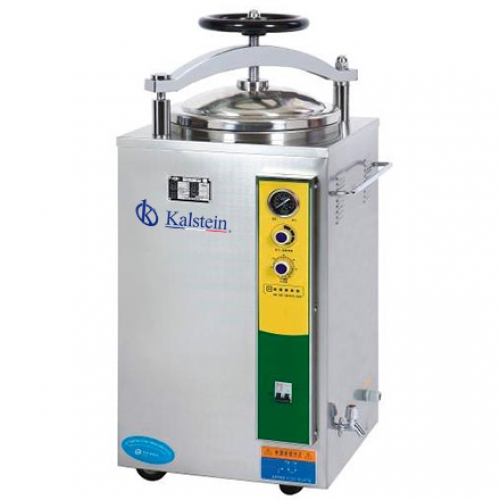The sterilization process is a critical aspect of any kind of laboratory. You need to have the right sterilizing instruments in order to have reliable and good results. Autoclaves machines are instruments that represent a good fit for laboratory and industrial applications too. This machine works with a pressure chamber to perform sterilization in the medical field and to cure coatings in the chemical industry.
Sterilization autoclaves are widely used in microbiology, medicine, podiatry, tattooing, body piercing, veterinary medicine, mycology and other different fields. They vary in size and function depending on the media that needs to go through the sterilization process. Most of the autoclave uses are about equipment and supply sterilization by subjecting the items to high-pressure saturated steam. Typical loads include laboratory glassware, other equipment and waste, surgical instruments, and medical waste.
Autoclaves for medical laboratories
A medical laboratory autoclave is a device that uses steam to sterilize equipment and other objects. This means that all bacteria, viruses, fungi, and spores are inactivated. You should also know that, a notable recent and increasingly popular application of autoclaves is the pre-disposal treatment and sterilization of waste material, such as pathogenic hospital waste.
Autoclaves are also widely used to cure composites and in the vulcanization of rubber. The high heat and pressure that autoclaves allow helps to ensure that the best possible physical properties are repeatable. Autoclaves are a very common instrument in many medical settings, laboratories, and other places that need to ensure the sterility of an object. Many procedures today employ single-use items rather than sterilizable, reusable items.
The education field also takes advantage of the autoclave functions. Most medical-grade autoclaves are inappropriate for research tasks. General-use non-medical autoclaves are increasingly used in a wide range of education, research, and industrial settings (including biomedical research) where efficiency, ease-of-use, and flexibility are the key factors.
Using the Autoclave for the Sterilization Process
There are some physical, chemical and biological indicators to see if an autoclave reaches the right temperature for the correct amount of time. You must keep them into consideration when using these laboratory devices. If a non-treated or improperly treated item can be confused for a treated item, then there is the risk that they will become mixed up, which, in some areas such as surgery, is critical.
When purchasing an autoclave you must consider load size, load type, and load frequency. You should know that medical-grade autoclaves are optimized for 24/7/365 use, processing flat trays of surgical instruments and red-bag waste in rectangular loading cassettes. It turns out that medical-grade units that are highly resource consumptive (even when sitting idle), with a demanding maintenance schedule and limited control system.
If your laboratory runs fewer than five cycles per day, rarely processes flat trays of instruments, does process tall containers, or needs to program custom cycles, it is unlikely a medical-grade sterilizer will suit your needs. Research-grade lab autoclaves are designed for programming flexibility, efficient daily operation, high reliability, and easy maintenance.
You should also think about your lab’s floor space when purchasing an autoclave. Most laboratories can find space for a benchtop or tabletop lab sterilizer, but you need a large lab to accommodate a 320L front-loading autoclave (with room for the door to swing open). Smaller labs that need to process larger loads should consider top-loading sterilizers, which offer large capacity in a small footprint.
In addition to lab space, equally important are utilities, especially local water quality. Supplying a lab autoclave with untreated hard water can significantly decrease the service life of your autoclave, while increasing energy consumption and unscheduled service outages. Visit our catalog HERE

